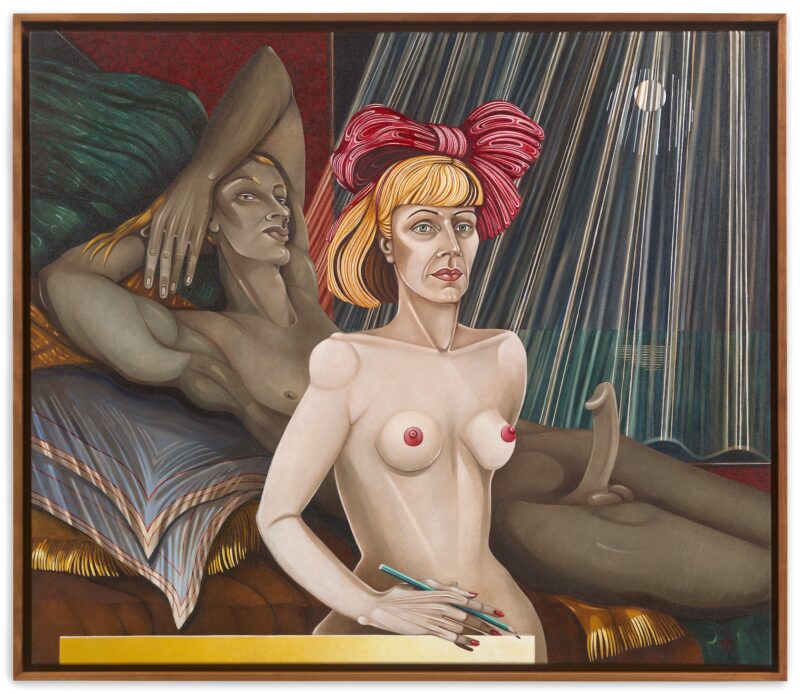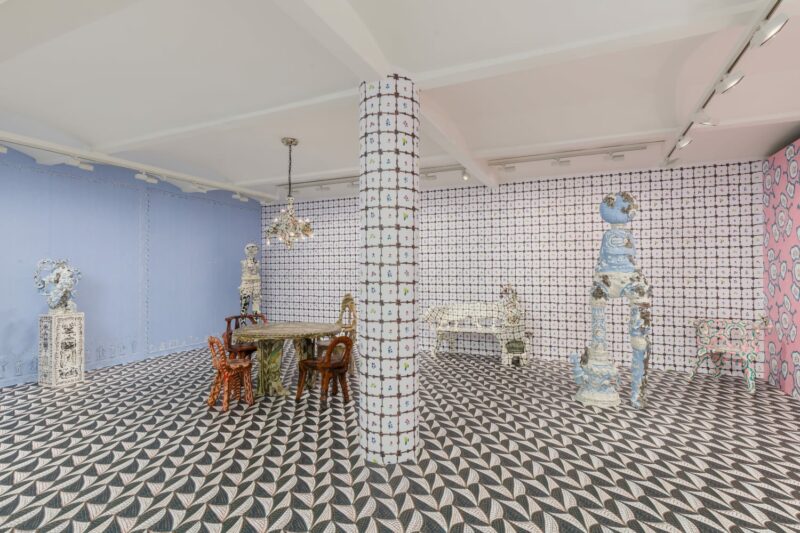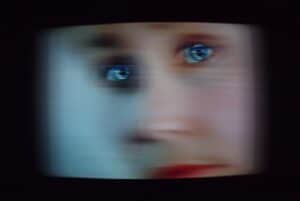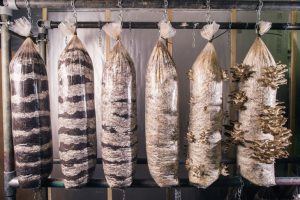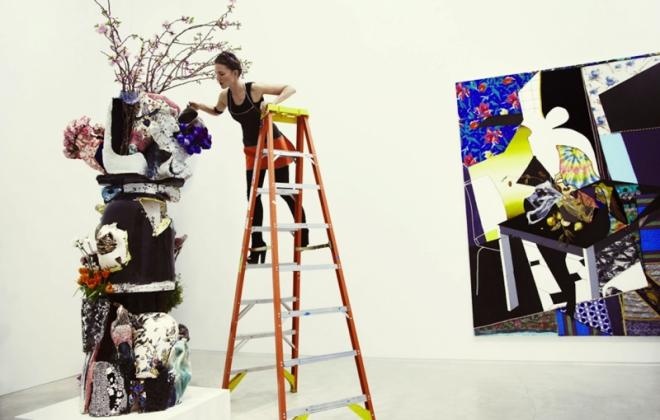
Francesca DiMattio installing Totem.
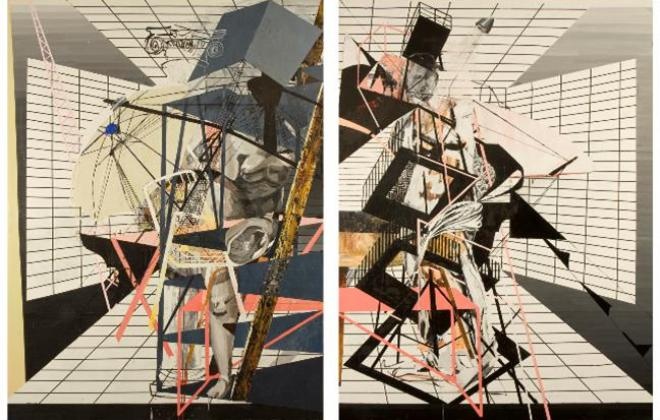
Francesca Di Mattio, Diptych (2008)
1.If you weren’t an artist, what else would you be?
If I wasn’t making art I would just make something else. I’ve always been interested in the domestic so I might make dishes, bedding, furniture and even jewellery and clothing. These are all things I’d still like to do. More and more I find that different modes of making are inspiring my work.
2. Can you tell us more about your work and what are the main ideas you would like to express?
I am interested in taking ideas of the “feminine” and representing them in ways that seem different than the expected. For example, making an 8′ porcelain sculpture whose structure of rough slabs and crushed vase forms sits in contrast to its detailed patterned glaze work. Porcelain which is usually associated with the small and delicate, is over scaled and paired with man-handled slabs. It is structured out of contradictions and hopefully makes easy categorization difficult.
3. How do you start the process of making work?
Each work leads to the next almost like a drawing. I am interested in polarities and difference so while sifting through hundreds of torn images I choose a bunch that seem to pull in different directions weather historically or narratively in terms of place.
4. Do you consider the viewer, when making your work?
When I’m working I am mostly thinking of how to make a good painting but along the way I do think of what kind of experience I’d like the viewer to have. I would like odd parings in the work to somehow confuse, distort and re-arrange our assumptions of visual language. Through layering and tangling images from various parts of culture; both high and low, historic and current, domestic and urban, I want to make something unstable. Choosing iconography that shares common structure, the paintings digest the disparate imagery into a new whole; what once seemed really different becomes very related.
5. Name 3 artists that have inspired your work?
Recently I’ve been thinking a lot about women artists who have somehow expanded their practice by incorporating elements of the domestic. Sonia Delaunay expanded her abstract canvases by making textiles on scarves and clothing. I also love painting that deals with shifts in language like Albert Oehlen, Laura Owens or David Salle. But really, I could make a list that went on forever.
7. What defines something as a work of art?
Something that makes you see things differently. It can be a very small shift or a big one but it alters your state of mind either in a concrete nameable way or something non-linguistic like a feeling of deja vu.
8. In times of austerity, do you think art has a moral obligation to respond topically?
I think conscious people will make work that somehow responds to the current world around us. I think when art self-conciously goes about this however, it is less successful. When trying to deal with a fixed concern or message, I feel language or text is a more direct, clear way of going about it. In a world bombarded by directness I am very protective of the foggy space of art making. It exists in a non linguistic space that pulls upon lesser used senses of memory, light, time, movement etc. It is nice to communicates through different means.
9. Anytime, any place – which artist’s body would you most like to inhabit?
As a women, I wouldn’t want to go back in time and think that right now is a good as it’s been.
10. What is your favourite ‘ism’?
I’d have to say cubism cause I love simultaneity.
11. Which artists would you most like to rip off, sorry, I mean appropriate as a critique of originality and authorship?
I “rip off” a lot of different artists in my work. I think a lot about how visual language moves through culture. How a print on a tacky dress can be so close to a the beautiful wallpaper in a Matisse painting, how beauty can so easily shift. I work from the visual so every element is somehow a copy of something else. I am more interested in how it all comes together to make something new rather than the authenticity of any one part. This is clearest in the ceramic sculptures. Looking at the history of porcelain ceramics, which is one of copying, stealing and fakes, the works are copies of copies of copies…
12. Do you care what your art costs? State your reasons!
Art is hard. It is expensive to make and I think things need to be priced so that people can live a decent life. Of course, that means only a certain sect of society will be purchasing your work which can be problematic. I make work in different mediums and scales so there is a range of accessibility.
13. If Moma and the Tate and the Pompidou wanted to acquire one of your works each, which would you want them to have?
The next one I make. I always look forward.
16. What’s next for you?
I just came back from London for the opening of, “Vertical Arrangements” at the Zabludowicz collection. It will be up until May. They showed sculpture and paintings from 2009-2013 and presented it along side an exhibition of Matthew Chambers and Albert Oehlen. This Spring I’ll be doing solo presentations at Art Basel Hong Kong and Art Brussels with Pippy Houldsworth. I will have show of painting and sculpture, at the Blaffer Museum in Houston Jan/2014.
Painting from the Zabludowicz Collection: Part 1 Francesca DiMattio
28th February – 5th May 2013 www.zabludowiczcollection.com
